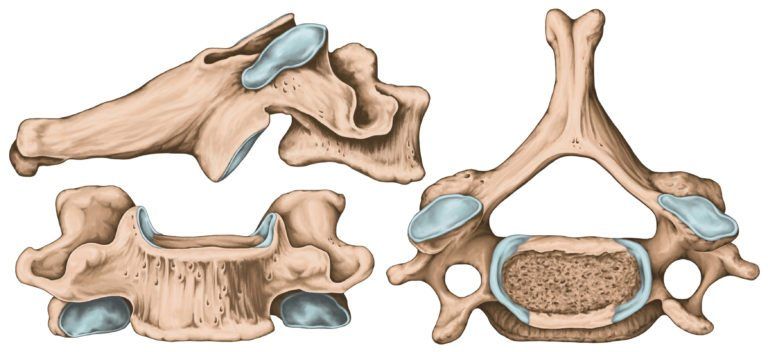ACDF (Anterior Cervical Discectomy & Fusion)

The human body is under a constant barrage of wear and tear, especially that most vital of our central structure, the spine, and neck. Every day we bend, twist, and turn, and after all that activity it’s no surprise that roughly two-thirds of the population will experience neck pain at some point in their lives. For some, it is a passing inconvenience, but for others, it can be ongoing and require the attention of your Midland Spine Surgeon, Dr. Peelle.
Your neck, like the rest of your spine, is comprised of alternating vertebrae and discs that aid in your day to day movement by being shock-absorbers between the vertebrae. Sufferers from degenerative disc disease experience degeneration or herniation of the discs, leading to stiffness and pain causing constant pain and stiffness that worsens at the end of the day. It’s been found that 25% of people with no symptoms under the age of 50, and 60% of those over age 40 suffer from degenerative disc disease.
When symptoms become severe your Midland Surgeon, Dr. Peelle may suggest Anterior Cervical Discectomy and Fusion surgery. This surgery involves the removal of damaged discs and replacing them with bone grafts or implants to help stabilize and strengthen the area. This process serves to decompress your spine, relieving the compressed nerve and soothing pain.
FAQ:
1. How can I tell if I need ACDF surgery?
If you’re experiencing severe pain and stiffness in your neck you should speak to your primary care provider so they, in coordination with Dr. Peelle, may be able to determine if ACDF is necessary for your condition.
2. Where does the bone for the graft come from?
There are three forms of bone graft that are used in ACDF surgeries. Autograft bone comes from the patient, often removed from the hip bone. This bone graft has the highest grade of success since it is living and thriving bone. Allograft bone is taken from an organ donor and is packed with living bone shavings to aid it successfully taking. Bone graft substitute is a synthetic made from plastic, ceramic, or special medical compounds. Like the allograft bone, it’s packed with living bone tissue during the surgery.
3. How is the surgery performed?
A 2-inch incision will be made on the side of your neck, and the tissues between the incision and your spine gently moved out of the way. Using a fluoroscope Dr. Peelle will pass a thin needle into the disc to locate the target vertebrae and disc. The adjacent bones are spread apart with a retractor and remove the disc and any material pressing on the nerves. The bone graft is then prepared and implanted. In many cases, the bone graft will then be reinforced with a metal plate to aid in recovery.
4. What will be my recovery time?
Most patients who have ACDF surgery are sent home the same day, but recovery varies from patient to patient. You may be assigned physical therapy, and your ability to perform physical activities will generally be limited until the follow-up appointment with Dr. Peelle.

